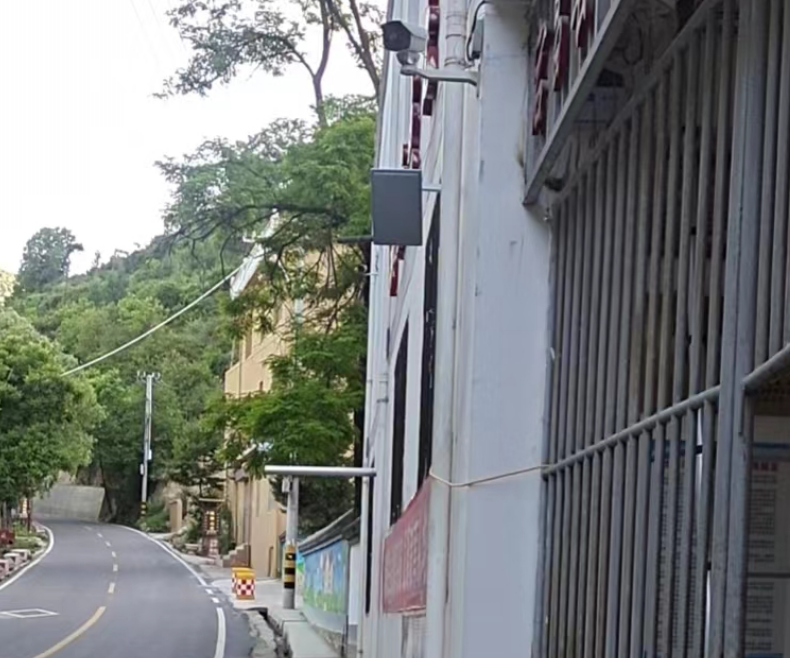Product Features

2.4GHz Band:
Globally available without additional licensing, strong anti-interference capabilities.
Long Range Identification:
Supports long range contactless reading without the need for active card swiping.
High-Speed Recognition:
Capable of identifying tags on high-speed moving objects.
Multi-Tag Reading:
Can read over 500 tags within 3 seconds.
Strong Anti-Interference:
Uses channel isolation technology, suitable for complex environments.
Multiple Communication Methods:
Supports RS232, RS485, Wiegand, and other interfaces.
Low Power Consumption Design:
Milliwatt-level power consumption, suitable for long-term use.
High Flexibility:
Adjustable reading distance and power output to fit various scenarios.
High Reliability:
Lightning-proof, waterproof, and dust-proof design, meeting industrial environment requirements.
Strong Expandability:
Supports multiple communication interfaces and can be seamlessly integrated with existing systems.
Low Maintenance Cost:
Stable device performance with online firmware upgrade support.

Wide Range of Applications
Personnel Attendance: Long range attendance in campuses, factories, and enterprises.
Vehicle Management: Access control for parking lots and highway toll collection.
Asset Tracking: Tracking of assets in factories and warehouses.
Campus Management: Student entry/exit management and all-in-one campus cards.
Industrial Environment: Personnel and equipment management in harsh environments such as construction sites, tunnels, and mines.
Core Functions
Function blocks | Function Details | Function Description |
Card Reading Function | Batch Card Reading | Supports reading multiple tags simultaneously, capable of reading over 500 2.4G active RFID cards. |
Long Range Identification | The reading distance is adjustable, with a maximum range of up to 120 meters or more. | |
Reading Modes | Supports active mode, passive mode, and response mode (optional). | |
Real-Time Reading | The reader can read tag information in real-time and transmit data to the host computer. | |
Communication and Data Transmission | Multiple Communication Interfaces | Supports various communication methods, including RS232, RS485, Wiegand (optional). |
Data Encryption and Security | Supports encrypted communication to ensure data transmission security. | |
Data Storage and Export | The reader can store tag information locally and supports export functions (optional). | |
Configuration and Management | Power Adjustment | The transmission power of the reader can be adjusted via software to control the reading distance. |
Cross-Subnet Configuration | Supports cross-subnet search and configuration, facilitating | |
Firmware Upgrade | Supports firmware upgrades to continuously optimize device functionality. | |
Interference Resistance and Stability | Channel Isolation Technology | Supports multi-channel operation to avoid interference between multiple devices. |
Anti-Collision Algorithm | Uses a hybrid data acquisition anti-collision algorithm to ensure stable operation in high-density tag environments. | |
Additional Functions (Optional) | RSSI Acquisition | Supports obtaining tag signal strength for positioning and distance estimation. |
Low Battery Alert | Supports low battery alerts for tags. | |
Local Storage and Processing | The reader has an integrated storage unit for local data processing. | |
Integration and Development (Optional) | API Interface | Provides APIs for easy integration with other systems. |
SDK Support | Provides a development toolkit for secondary development. | |
Protocol Compatibility | Supports multiple communication protocols. |
Specifications
| Category | Item | Specifications | ||
Basic Specifications | Operating Frequency Band | 2.4GHz ISM band (2.450GHz to 2.483GHz) | ||
Modulation Method | GFSK/MSK | |||
Communication Rate | 250Kbps, 500Kbps, 1Mbps | |||
Output Power | ≤3 dBm (adjustable via software) | |||
Microwave Communication Error Detection | CRC16 cyclic redundancy check | |||
Receiver Sensitivity | -90dBm | |||
Reading Distance | 0 to 120 meters (adjustable) | |||
Recognition Speed | Up to 200 km/h | |||
Recognition Angle | Directional | |||
Recognition Capability | Simultaneous recognition of over 500 tags | |||
Error Rate | One in ten million | |||
Audio and Light Indicators | Status indicator lights and built-in buzzer | |||
Power Supply Range | DC 5V-18V | |||
Power Consumption | Operating power: 5W to 10W, Standby power: <1W | |||
Interface Types | RS485, RS232 (optional), Wiegand26/34 (optional) | |||
Data Format | Supports multiple data formats, such as ASCII, HEX | |||
Communication Protocol | Supports TCP/IP, UDP, Modbus, and other protocols | |||
Reliability | Operating Humidity | 93±3% (non-condensing) | ||
Operating Temperature | -20°C to +60°C | |||
Protection Rating | IP65 | |||
Electromagnetic Interference Resistance | 10V/m 0.1~1000MHz AM modulated electromagnetic waves | |||
Reliability | MTBF (Mean Time Between Failures) ≥ 70,000 hours | |||
Appearance | Dimensions | 335 (L) x 196(W) x 103(H) mm *Actual dimensions and weight may vary depending on configuration, manufacturing process, and measurement methods. | ||
Material | Base Shell: ADC12 Aluminum Alloy; Top Cover: PC + ABS | |||
Color | Base Shell: Gray Spray Plastic; Top Cover: Gray | |||
Weight | 650g |
1. Automatic upgrade: If the battery level is greater than 30%, do not touch the screen when restarting. There will be two words "upgrade" next to the signal in the upper left corner, and then wait for about five minutes for automatic upgrade. 2. Manual upgrade: If the battery level is greater than 30%, click on remote upgrade in the settings, do not touch the screen, and it will automatically upgrade. Do not click upgrade within 5 minutes of booting up, as the backend will automatically query the version at this time.
If the device is not online, you can check it one by one as follows. 1. Try restarting the device first. If it still doesn't work after restarting, follow the steps below to troubleshoot. 2. Is the IMEI entered into the platform consistent with the actual IMEI of the device. (It is recommended to check the device IMEI in the device menu) 3. Check if the SIM card inserted into the device is in arrears, if it is shut down, and if a second real name authentication is required. 4. Whether the device displays a 4G signal and the data icon is normal (the icon with a diagonal bar represents abnormality) without any outstanding fees or shutdown 5. If the signal is not displayed, unplug and reinsert the SIM card, restart the device and check again. If the 4G signal still doesn't work despite normal display, find another SIM card, insert the device and restart to see if it works properly. If it works, it's a problem with the SIM card.
During the device entering power-saving mode, it cannot automatically update its positioning, and functional instructions cannot be executed in a timely manner. It needs to be set to normal mode before it can work normally according to instructions. Please make backups yourself!
If the device is located indoors or in an underground parking lot, it may result in the inability to search for GPS satellite signals, which are either WIFI signals or base station signals, leading to significant errors, which is a normal phenomenon. After the device moves outdoors or leaves an area with poor signal, it will automatically calibrate its position. As long as it is outdoors or in an open area, the error will not be significant.
The front of the device faces outward because there is a ceramic antenna on the front that receives signals. If the front is obstructed by metal, it will affect the normal use of the device.